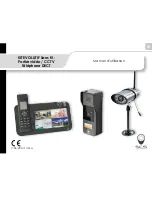
NI 9237E Operating Instructions and Specifications
22
ni.com
Data rate range (
f
s
) using external master timebase
Minimum .................................... 391 S/s
Maximum ................................... 51.36 kS/s
Data rates
1
(
f
s
) ...................................
,
n
= 1, 2, …, 31
Typical input range ........................... ±25 mV/V
Scaling coefficient ............................ 2.9802 nV/V per LSB
Overvoltage protection
between any two pins........................ ±30 V
1
The data rate must remain within the appropriate data rate range. Refer to the
Understanding NI 9237E Data Rates
section for more information.
f
M
256
n
---------------------















































